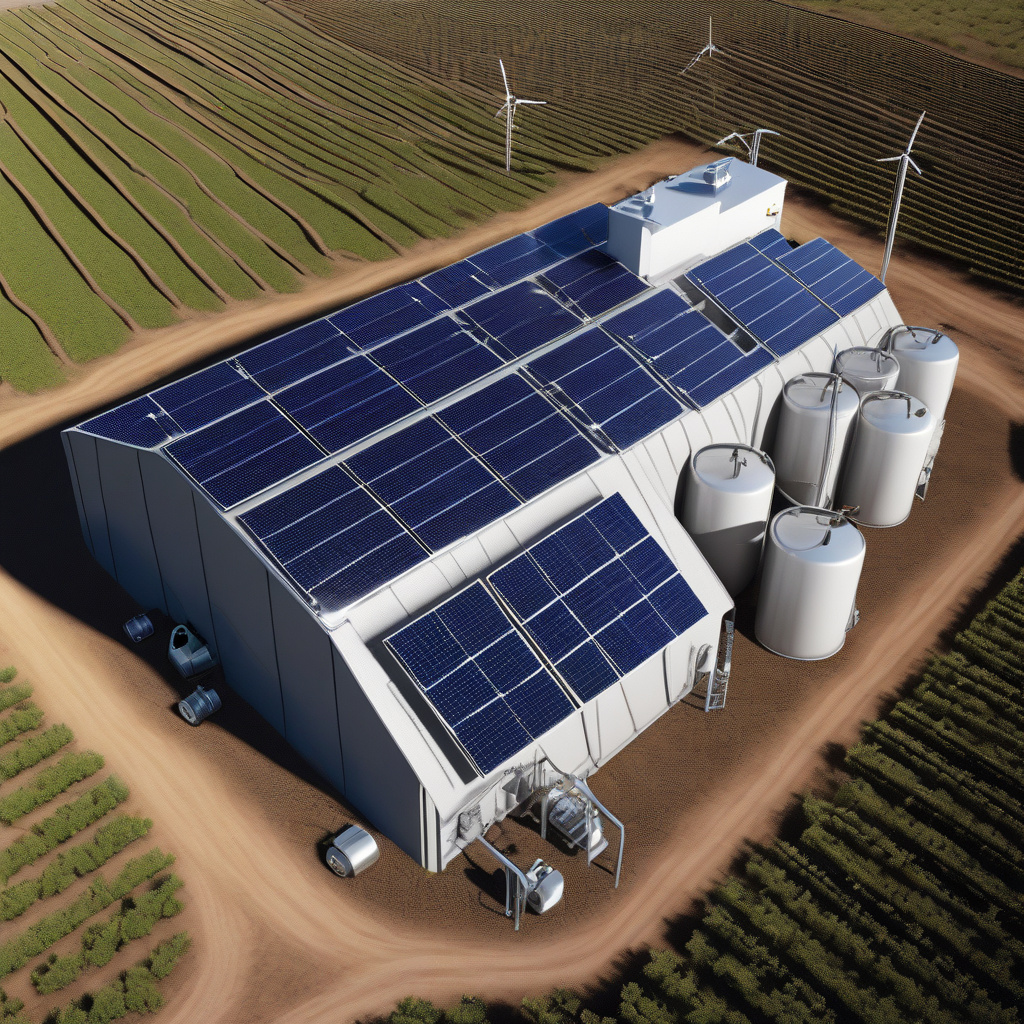Solar-Powered System Creates Fertilizer from Urine, Boosts Energy Efficiency by 60%
A Stanford-led research team has developed a system that converts human urine into fertilizer using solar power, showcasing a groundbreaking innovation that not only promotes sustainability but also enhances energy efficiency by a staggering 60%. This pioneering technology holds immense promise in revolutionizing agricultural practices and addressing environmental challenges in a world striving for cleaner and greener solutions.
The concept of utilizing urine as a potent source of fertilizer is not entirely new, as its nutrient-rich composition has long been recognized for its agricultural benefits. However, the innovative aspect of this system lies in its utilization of solar power to effectively convert urine into a valuable resource for plant growth. By harnessing the sun’s energy, this technology not only reduces the energy consumption associated with traditional fertilizer production but also minimizes the environmental impact typically linked to synthetic fertilizers.
One of the key advantages of this solar-powered system is its ability to harness renewable energy sources, thereby reducing reliance on non-renewable energy and lowering greenhouse gas emissions. By integrating solar power into the urine-to-fertilizer conversion process, the system exemplifies a sustainable approach that aligns with global efforts to mitigate climate change and promote eco-friendly practices.
Moreover, the efficiency of the system is a notable highlight, with a remarkable 60% increase in energy efficiency compared to conventional fertilizer production methods. This significant enhancement underscores the potential of solar-powered technologies to optimize resource utilization and drive innovation in the realm of agriculture and sustainability.
In practical terms, the implications of this technology are far-reaching. By transforming a readily available waste product into a valuable resource for agriculture, the system offers a circular solution that not only reduces waste but also promotes soil health and crop productivity. This closed-loop approach exemplifies the principles of a circular economy, where resources are utilized efficiently, and waste is minimized through innovative technologies.
Furthermore, the scalability of this solar-powered system opens up possibilities for widespread adoption across different agricultural settings, from small-scale farms to large agricultural operations. The simplicity of the technology, coupled with its energy-efficient design, makes it a viable and attractive option for farmers looking to enhance sustainability practices and reduce their environmental footprint.
As we navigate towards a more sustainable future, innovations like the solar-powered urine-to-fertilizer system play a crucial role in driving positive change and fostering a more environmentally conscious approach to agriculture. By combining renewable energy sources with resource recycling, this technology exemplifies the intersection of innovation, sustainability, and efficiency in addressing the complex challenges facing our food systems.
In conclusion, the development of a solar-powered system that converts urine into fertilizer represents a significant step towards a more sustainable and energy-efficient agricultural sector. By harnessing the power of the sun to transform waste into a valuable resource, this technology not only reduces environmental impact but also showcases the potential for innovative solutions to drive positive change in the way we produce food. As we strive towards a more sustainable future, embracing such cutting-edge technologies will be instrumental in shaping a greener and more resilient world.
solar power, sustainability, agriculture, innovation, energy efficiency












